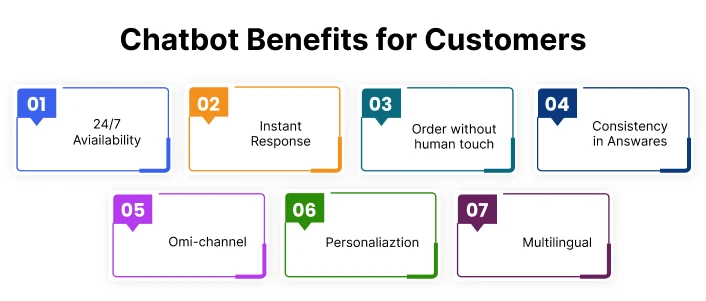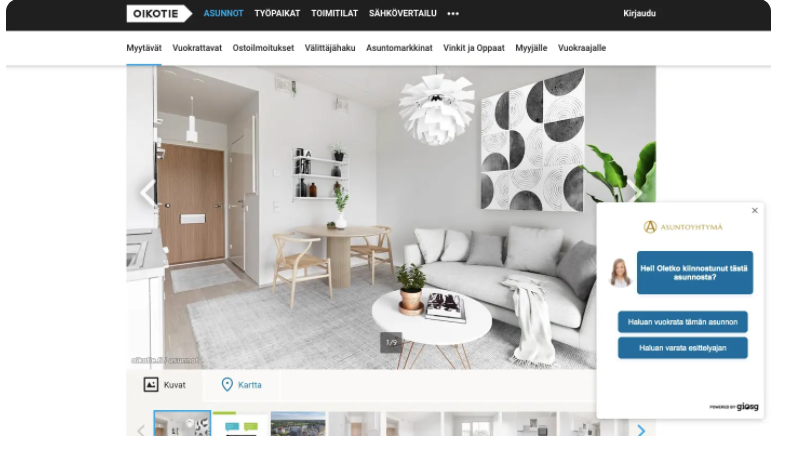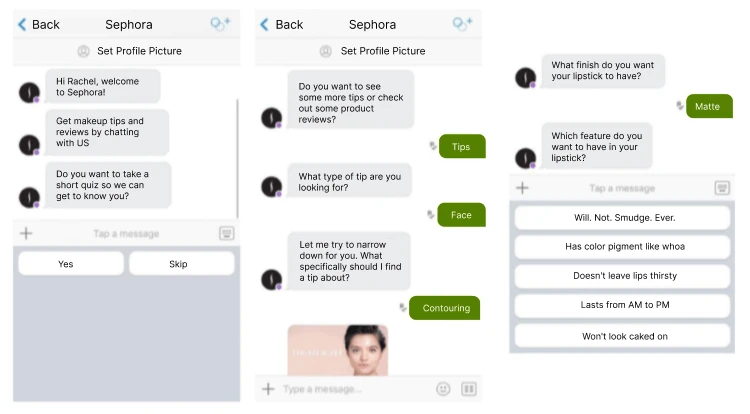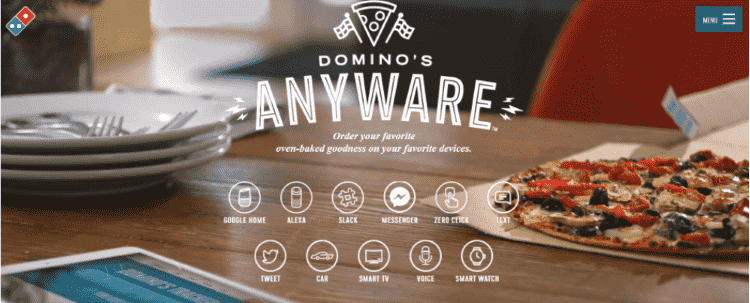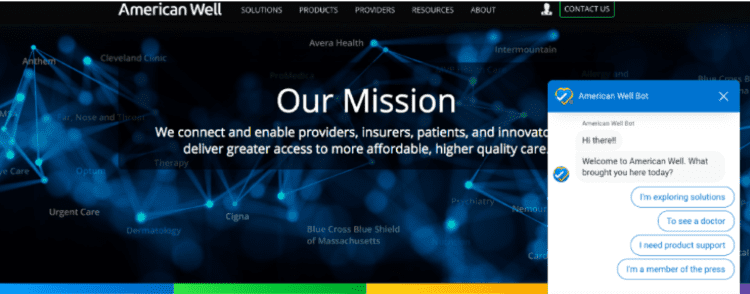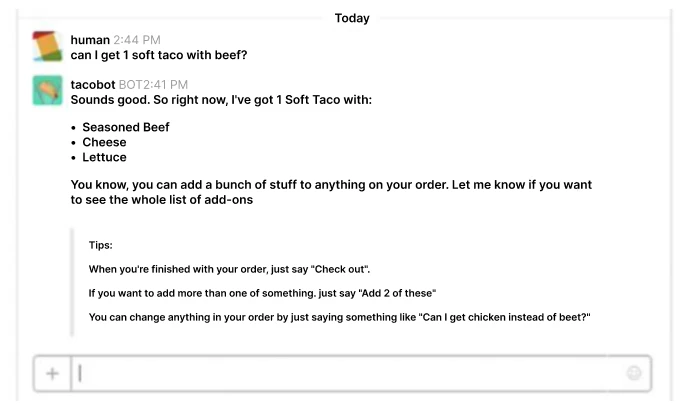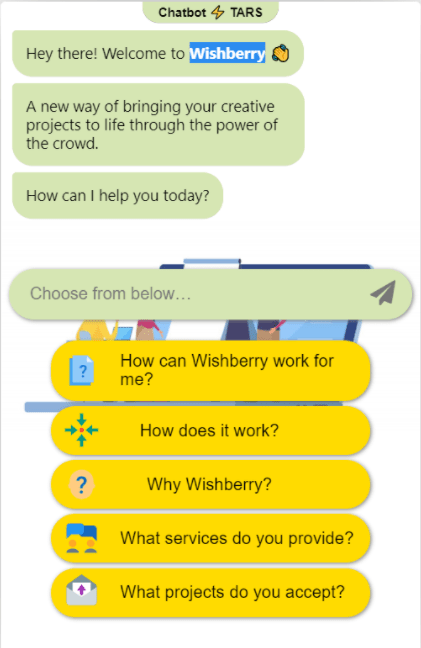Do you know why a chatbot is important for your business? Chatbots have revolutionized the way businesses engage with customers. It offers tons of benefits that enhance efficiency, drive sales, and improve overall customer satisfaction. Also, chatbots have become indispensable tools for businesses across industries for streamlining customer service, boosting lead generation, and providing personalized experiences.
In fact, 35% of consumers want more companies to use chatbots to improve their communication strategy and deliver a better experience.
With so many benefits of chatbots, you should immediately plan to automate customer communication and ensure a hassle-free customer journey at every step of the way. In this article, let’s explore the chatbot business benefits and know how it will uplift your business.
Chatbot Benefits for Employees
It enables employees to focus on more strategic aspects of their work. Ultimately, chatbot fosters a more productive and satisfying work experience by automating repetitive tasks and offering personalized assistance. Employees can get numerous benefits from chatbots. Some of the benefits of chatbots for employees include:
- Efficiency: Chatbots can handle routine tasks and inquiries, freeing up employees’ time to focus on more complex and strategic aspects of their work. This efficiency can lead to increased productivity and reduced workload stress.
- Consistency: It provides consistent responses to inquiries to ensure that all employees receive the same information and guidance. This reduces the risk of errors and misunderstandings that can occur with human communication.
- Training and Onboarding: AI chatbots can assist new employees during the onboarding process by providing them with information about company policies, procedures, and resources. They can also offer training modules and quizzes to help employees learn new skills and knowledge.
- Personalization: Advanced chatbots can personalize their responses based on the user’s preferences, history, and behavior. This personalization can enhance the employee experience by providing tailored assistance and recommendations.
- Task Automation: Chatbots can automate repetitive tasks such as scheduling meetings, managing expenses, and processing requests. This automation streamlines workflows and reduces administrative overhead for employees.
Chatbot Benefits for Customers
If your business wants to engage customers around the clock and improve their experience, it must use a bot at some point in time. This will help manage customer requests with instant responses and boost satisfaction levels.
Let’s take a closer look at the advantages of chatbots.
- 24/7 Availability – Customers needn’t wait for the next available operator when chatbots are part of the communication strategy on a round-the-clock basis.
- Instant Response – Chatbots can handle the queries of thousands of customers instantly as well as simultaneously and improve the average response time.
- Consistency in Answers – The use of chatbots can help businesses maintain a great level of consistency in answers and improve customer experience with the brand.
- Omni-channel – AI-powered bots come with omni-channel messaging support features that help customers communicate with businesses through various channels such as websites, Facebook, etc.
- Personalization – Bots can ensure a touch of personalization by engaging customers with one-on-one conversations, maintaining a natural-sounding tone, and being good at interactive communication.
- Multilingual – Your business can program the sales bot to answer queries in the language of customers and expand its reach to new markets or territories.
- Order without human help – Thanks to bots-driven automation, customers can book orders or do transactions without any human help.
Chatbots with AI and machine learning capabilities can help you redefine customer service in a big way. Start a free trial to unlock the full advantages of chatbots.
Chatbot Benefits for Businesses
Chatbots can be an incredibly useful tool when it comes to forging good customer relationships. Your business can leverage it to build strong connections by engaging, and interacting with, users coming to the website. By integrating chatbots, you not only achieve marketing goals but also drive sales and improve customer service. Plus, chatbot maintenance is so affordable that it can add to the benefits of your business.
There are many different ways a chatbot can positively impact customer communication and drive business growth. Now let’s explore the key benefits of chatbots for business.
- Increase Customer Engagement
- Improve Lead Generation
- Reduce Customer Service Costs
- Monitor Consumer Data to Gain Insights
- Devise a Conversational Marketing Strategy
- Balance Automation with Human Touch
- Meet Customer Expectations
- Achieve Scalability of Support
- Streamline Your Customer Onboarding Process
- Make the Customer Journey Smoother
- Gather Customer Feedback Easily
- Multi-language Support
- Enhance Personalization
- Enable Self-Service Options
- Support Internal Operation
- Facilitate Multi-channel Communication
- Drive Sales and Upselling
- Enhance Feedback Collection
- Provide Instant Responses
- Lower Employee Churn
Let us discuss the chatbot benefits in detail.
1. Increase Customer Engagement
Chatbots can help businesses take customer engagement to the next level. By using conversational AI chatbots, engagement can be driven based on user data and made more interactive.
What’s more, bots can deliver consistent answers and this helps you avoid dishing out irrelevant information to customers. And when relevant and quick responses are delivered, customers can stay longer on your website and maintain the conversation.
Tips to boost customer engagement using chatbots
- Personal touch to conversations- Chatbots are smart enough to analyze responses based on the customer details and history and thus, can engage at a personal level and drive conversations.
- Real-time response – Your business can use bots to deliver fast, real-time responses to customers and avoid losing them to competitors.
- One-on-one responses – Customers expect immediate one-on-one responses and you can use a chatbot to meet that goal and enhance their experience with your brand.
2. Improve Lead Generation
Bots are quite advanced and also very effective at engaging customers with personalized messaging throughout their journey. In fact, your business can use chatbots for lead generation to guide customers in making quick decisions.
AI bots can use a preset questionnaire to persuade visitors for lead generation and ensure higher conversion rates.
Source
A Finnish housing investment company, Asuntoyhtymä, is a good example of how to use chatbots for lead generation. It implemented a going chatbot onto property portals to help its customers with an easy way to reach out. The company created two different contact forms, one each for rental requests and arranging a viewing, and went on to generate 300 new leads in just three months.
How to use chatbots for lead generation?
- Better lead qualification – Bots qualify leads by asking relevant questions and directing them to the sales team for immediate sales conversion. A chatbot template for appointment booking can help schedule an appointment if the team is busy/unavailable.
- Better lead nurturing – The qualified leads are nurtured thereafter based on their customer journey. For e.g. in an e-commerce business, a chatbot engages the customers by giving personalized recommendations, combo offers, or discount coupons to improve sales conversions.
3. Reduce Customer Service Costs
Implementing chatbots is an investment to optimize customer service costs. By investing in chatbots, you can save extra costs that otherwise go into hiring more support resources.
With chatbots, a business can reduce costs on different levels:
- Salaries
- Training
- Infrastructure
Similarly, customer service with AI chatbots can benefit in many ways;
- Scale their chat support during busy hours
- Automate routine business processes
- Enable new customer service models
In addition, an AI-powered shopping bot can be scaled during the peak hours of business without any further costs. Besides, by ensuring a brand experience that is simpler and more seamless for customers, bots also reduce a significant amount of money and add value to the bottom line.
4. Monitor Consumer Data to Gain Insights
Chatbots are an excellent tool to track purchasing patterns and analyze consumer behaviors by monitoring user data. This data can help companies market the products differently and expand their reach. Similarly, bots can be used to collect feedback through simple questions and improve products or optimize the website.
Sephora, the globally acclaimed cosmetic brand implemented a chatbot in partnership with the Kik messaging application. It allows customers to use the chatbot to ask for makeup recommendations or request product reviews and get relevant products or videos.
Best practices in using chatbots for consumer data
- Create customer profiles – Your company can use chatbots to collect customer information like name, contact details, etc., and create a customer profile.
- Send push notifications – The use of bots can prove helpful in keeping existing customers engaged through regular and timely push notifications.
- Suggest relevant content – Brands that use AI-powered bots can provide customers with product details and also suggest relevant content.
5. Devise a Conversational Marketing Strategy
Conversational marketing is all about using the power of real-time customer interactions to help move buyers through the sales funnel.
It can help your business create authentic experiences and build relationships with customers.
When brands use chatbots for marketing, they easily engage with people through targeted messaging and smart chatbots, therefore, driving the conversion rate.
Domino’s AnyWare takes the concept of conversational marketing to the next level by allowing customers a chance to order their favorite items through several available menu options.
Benefits of conversational marketing strategy
- Engage more leads – Your business can engage with more leads when it allows visitors to start conversations on the website compared to when it asks them to first fill out the forms.
- Respond to customers individually – Bots may not be among the top examples of guerrilla marketing but they can nonetheless make it easier to respond to customer questions individually and avoid the usual fixed lead funnel crammed with marketing activities.
- Improve customer experience – The purpose of conversational marketing is to cut back on frustrating experiences that customers encounter with the customer support line or IVR system.
6. Balance Automation with Human Touch
Combining AI technology with a human touch can help brands deliver seamless customer support. Likewise, the integration of chatbot and live chat software together means you empower customers to self-serve and connect with a human agent when needed.
By using AI-enabled chatbots as the primary channel, your business can deliver real-time support, promptly answer queries, and boost customer satisfaction. However, there might be instances when the bot is not able to identify the user intent in the request and so it needs to make a human handover.
For that reason, you need to understand the difference between chatbot vs live chat and try to integrate them together for better customer service.
Source
American Well, a telemedicine company, is a good example of how websites can use chatbots and live chat intelligently to determine user intent quickly and enhance customer experience.
Tips to balance automation with the human touch:
- Live chat agents can handle complex queries that require comprehensive discussion without leaving the customers unanswered.
- The smooth transition between chatbot and live chat provides real-time responses to the customers, giving them the best hybrid experience.
- The integration of live chat and chatbot together can help brands engage with customers intelligently and all day, every day.
7. Meet Customer Expectations
Customers expect quick responses to complaints or queries.
Since chatbots are increasingly getting smart, brands can use them to automate some of the routine interactions and meet customer expectations. Whether you use an Android chatbot or WhatsApp, the purpose is always the same: to ensure value to customers via automation.
With automation as one of the chatbot use cases, customers won’t have to wait for human agents for engagement and this can definitely their experience with the brand and contribute to retention as well.
Tips to use chatbots to meet customer expectations
- Proactive interactions – Bots can help businesses proactively interact with customers, deliver them quick responses, and get higher open rates than email.
- Personalized experience – The use of a chatbot can prove very handy when it comes to delivering a personal experience to customers across multiple touchpoints as this can also impact sales and conversion rates.
- Effective targeting – Using chatbots for sending visual content and giving information about product information, offers, discounts, etc can ensure effective targeting and boost customer engagement.
8. Achieve Scalability of Support
For any customer-centric business, having the option to scale the support should always be among the first priorities.
By achieving the scalability of support, it can have the ability to successfully handle any traffic surge — like the festive seasons or peak hours — without much investment.
This is where chatbots can help — they ensure your business can manage conversations during peak hours without adding more support experts or without providing training, etc.
A lot of restaurant businesses deploy chatbots to effectively handle the situation when the demand rises, the customer orders go high but a small staff is not able to handle it. Big brands like Taco Bell and Domino are using chatbots to arrange the delivery of parcels.
How can chatbots help scale your support?
- The use of customer support chatbot templates can help you improve your business productivity without any extra costs and resources.
- AI-powered bots are able to manage thousands of conversations and answer each question immediately, no matter what time it is or how many customers are reaching you.
- You can scale the support with bots and handle a large volume of chats without affecting the business costs.
9. Streamline Your Customer Onboarding Process
Customers love being guided and pampered.
No matter how many tutorials or content guides you provide, they will still show some reluctance to find the information on their own.
After all, customers prefer brands that show them the way.
This is where a website chatbot can prove handy as your business can use them to educate customers and ease the onboarding process.
Source
The example of Wishberry, a popular crowdfunding platform for creative artists, shows how chatbots can help get your onboarding exercise right.
Tips to use chatbots for onboarding customers:
- Chatbots can ask questions and collect answers and based on that can show the route to whatever customer is looking for.
- The use of bots can help brands route customers to the best place to find the information they search to make informed decisions.
- Chatbot implementation can help understand what a customer has or hasn’t found in order and this information can be used to smartly push customers along the conversion funnel.
- It’s possible to personalize the questions a chatbot asks and then create a better user experience during the purchase journey.
10. Make the Customer Journey Smoother
Losing prospects halfway through a sales funnel is a never-ideal situation and no business would like that to happen.
Many reasons could stop customers from purchasing, like a cumbersome check-out process or hidden costs.
Chatbots can prove effective in helping brands reduce customer churn and make the customer journey smoother.
You can create the right bot scripts to effectively engage customers and answer their queries at different stages of the journey.
Tips to use chatbots to improve the buying process:
- You can offer additional information on products, services, or shipping which can remove doubts and make the customer journey smoother.
- Use interactive content such as videos to provide more insights and build trust with prospects and customers.
- Chatbots are always a great help in providing discount codes and offers so that customers can find value in the marketing funnel.
11. Gather Customer Feedback Easily
Businesses must understand their customers’ needs, preferences, and satisfaction levels. However, traditional methods like surveys and email requests can be time-consuming and often yield low response rates. Chatbots offer a more efficient and interactive way to collect feedback from customers.
By integrating chatbots into their platforms, businesses can streamline the feedback collection process. It engages customers in real-time conversations and gathers valuable insights to improve their products and services.
Tips to use chatbots to gather customer feedback
- You can design interactive surveys within the chatbot interface to gather specific feedback on products, services, or recent interactions. Keep the questions concise and easy to answer to encourage participation.
- Chatbots can automatically trigger feedback requests based on predefined triggers.
- It can facilitate the distribution of incentives upon completion of the feedback process.
12. Multi-language Support
It enables businesses to communicate effectively with customers from diverse linguistic backgrounds. It involves the ability of chatbots to understand, process, and respond to inquiries in multiple languages, thereby enhancing accessibility and inclusivity for a global audience.
Tips to provide multi-language support:
- With a multi-language chatbot, you can implement automatic language detection to identify the language used by customers to ensure accurate responses.
- Offer a menu or language selection option at the beginning of interactions to allow customers to choose their preferred language.
- It allows the integration of translation services or APIs to facilitate real-time translation of messages between the customer and the chatbot.
13. Enhance Personalization
Personalization in chatbots refers to the ability to deliver customized experiences based on data collected from customer interactions and other sources. It involves understanding the unique needs, preferences, and characteristics of each customer and using this information to provide relevant and targeted responses.
Personalized chatbot interactions can include addressing customers by name, and recommending products or services based on past purchases or browsing history. Also, remembering previous conversations and preferences, and adjusting the tone and style of communication to match the customer’s personality.
Tips to enhance personalization:
- Start by gathering relevant information about your customers, such as their demographics, purchase history, browsing behavior, and preferences.
- You can leverage advanced analytics tools to analyze the data collected and gain insights into customer behavior, preferences, and patterns.
- Divide your customer base into segments based on common characteristics or behaviors, such as demographics, purchase history, or engagement level.
14. Enable Self-Service Options
Enabling self-service options through chatbots empowers customers to find answers to their questions and resolve issues independently, without the need for human assistance. Self-service options in chatbots involve providing customers with tools and resources to address their queries and concerns on their own, within the chatbot interface. This can include features such as knowledge bases, FAQs, troubleshooting guides, tutorials, and automated processes for common tasks.
By offering self-service options, businesses can improve efficiency, reduce support costs, and provide customers with immediate assistance, ultimately enhancing the overall customer experience.
Tips to enhance personalization:
- Develop a robust knowledge base that covers a wide range of topics, including product information, troubleshooting guides, frequently asked questions (FAQs), and how-to articles.
- You should provide step-by-step troubleshooting guides within the chatbot interface to help customers diagnose and resolve common issues on their own.
- Integrate your chatbot with backend systems such as CRM, inventory management, and ticketing systems to access real-time data and provide accurate and up-to-date information to customers.
15. Support Internal Operation
You can use chatbots to support internal business operations. It automates and streamlines various tasks and processes within an organization. This includes functions such as employee onboarding, IT support, HR inquiries, and workflow management. Chatbots can serve as virtual assistants, providing employees with instant access to information, guiding them through procedures, and facilitating communication with different departments or systems.
Tips to support internal operations:
- Ensure seamless integration with HR, IT, and other systems for real-time data access and updates.
- Tailor chatbot functionalities to internal workflows and incorporate personalization features like user authentication.
- Gather employee feedback for refining the chatbot’s capabilities and monitor usage analytics to optimize performance over time.
16. Facilitate Multi-channel Communication
Multi-channel communication through chatbots involves enabling interactions across various platforms and channels, including websites, social media, messaging apps, and voice assistants. Businesses can meet customers where they are most comfortable and provide consistent support and engagement experiences across platforms by expanding the reach of chatbots to different channels.
This approach not only enhances accessibility for customers but also improves brand visibility and engagement opportunities. You can integrate chatbots with multiple channels. It requires ensuring compatibility, consistent branding, and seamless transition between channels to maintain a cohesive user experience.
Tips to facilitate multi-channel communication:
- You can integrate chatbots seamlessly across chosen channels, maintaining consistent branding and messaging.
- Leverage cross-channel data for insights into customer behavior. It enables personalized interactions and communication strategies.
- Try to implement response adaptations based on channel-specific context and limitations to ensure optimal user experience.
17. Drive Sales and Upselling
It involves leveraging chatbots to engage customers, provide personalized product recommendations, and guide them through the purchasing process. Chatbots can proactively initiate conversations with customers, understand their preferences and purchase history, and recommend relevant products or services based on their needs. By offering timely and tailored suggestions, chatbots can increase conversion rates and encourage upselling opportunities.
Tips to drive sales and upselling:
- You can use the customer data and purchase history to make personalized product recommendations. Analyze past interactions and preferences to offer relevant suggestions that align with the customer’s interests and needs.
- Always try to engage customers in contextual conversations based on their current browsing behavior or previous interactions.
- You should smooth the checkout process within the chatbot interface to minimize friction and make it easy for customers to complete their purchases. You can utilize secure payment gateways and offer multiple payment options to enhance convenience and trust.
18. Enhance Feedback Collection
It includes creating mechanisms to gather valuable insights from customers about their experiences, preferences, and satisfaction levels. Chatbots can proactively solicit feedback after interactions, prompting users to provide input on the quality of service, product experiences, or overall satisfaction. Chatbots can analyze and categorize feedback in real time to enable businesses to identify trends, prioritize areas for improvement, and make data-driven decisions to enhance the customer experience.
Tips to enhance feedback collection:
- You can easily request feedback from customers at strategic moments in their interaction journey to ensure relevance and maximize response rates.
- It is effective to include open-ended questions to encourage detailed feedback and suggestions, avoiding leading prompts for genuine insights.
- Also, you can utilize analytics tools to categorize and analyze feedback data and identify trends to prioritize improvement efforts effectively.
19. Provide Instant Responses
Chatbots use artificial intelligence and natural language processing to understand and respond to user queries in real-time minimizing wait times and increasing customer satisfaction. Also, it can address customer needs promptly, whether it’s resolving support issues, providing product information, or assisting with transactions. To achieve this effectively, businesses need to design chatbots with robust capabilities to handle a wide range of queries autonomously. Additionally, ongoing monitoring and optimization of chatbot performance are crucial to maintaining responsiveness and improving user experience over time.
Tips to provide instant responses:
- You should use preset answers for common questions to provide instant replies. It reduces wait times and enhances satisfaction.
- You can employ machine learning for ongoing improvements in chatbot responses.
- Integrate chatbots with backend systems for immediate access to up-to-date information for instant and accurate responses.
20. Lower Employee Churn
Chatbots can streamline internal processes, reduce frustration, and empower employees to perform their tasks more efficiently. It can serve as a virtual assistant, guiding employees through onboarding processes, training modules, and HR inquiries, thus fostering a positive and supportive work environment. To effectively lower employee churn using chatbots, organizations should focus on customization to meet specific employee needs. It ensures seamless integration with existing systems and processes and continuously gathers feedback to identify areas for improvement and optimization.
Tips to lower employee churn:
- You need to customize chatbot interactions to cater to the unique needs and preferences of employees to offer personalized assistance and guidance tailored to their roles and responsibilities.
- Integrate chatbots with HR systems and databases to streamline employee onboarding, performance management, and HR inquiries for easy access to relevant information and resources.
- Ask for feedback from employees regarding their experience with chatbots and use this feedback to continuously improve and optimize chatbot functionalities to lower employee churn.
Prepare Your Business for the Future with Chatbots Benefits
Chatbots are gradually transforming the contours of customer communication. They are adding a new dimension to different aspects of the industry be it customer service, sales, marketing, and engagement.
So, your business needs a plan to get the most out of bots in terms of lead generation, customer insights, onboarding, and customer support scalability. Sign up to get a powerful bot for your support team and start delivering value to customers.
However, it is equally essential to first identify the areas of concern and then start deploying chatbots to achieve the desired business advantages. With so many benefits for businesses, it would be a mistake if your business bucked the trend and did not integrate a bot sooner rather than later.

